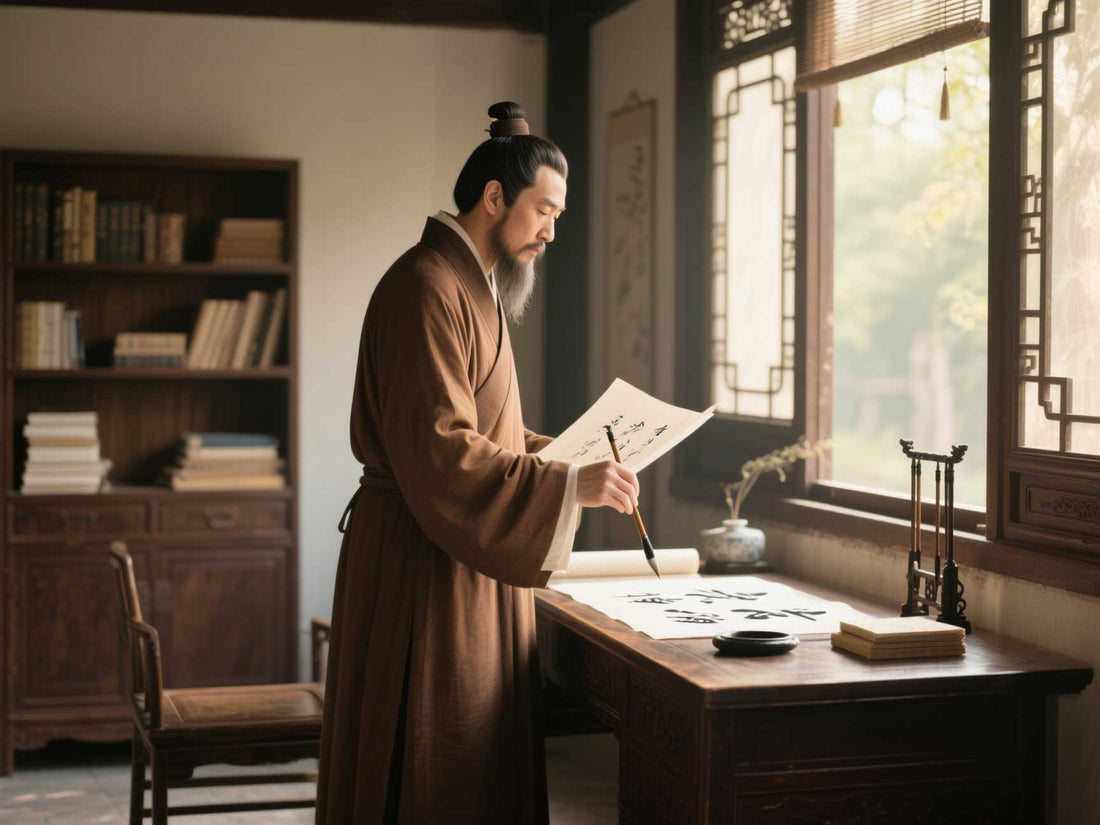
Classification and characteristics of main calligraphy styles
Share
1. Core calligraphy system
Seal Script
Origin : Shang and Zhou dynasties, including large seal script (oracle bone script, bronze script) and small seal script (Qin unified script);
Features : thin, strong and round lines, symmetrical and rigorous structure, large seal script is ancient and solemn, small seal script is simplified and neat;
Representative works : Li Si's "Yishan Stele" and the inscription on the "Maogong Ding" of the Western Zhou Dynasty.
Lishu
Evolution : It originated in the Qin Dynasty and reached its peak in the Eastern Han Dynasty. It was simplified from the seal script.
Features : The characters are wide and flat, with horizontal strokes like "silkworm head and swallow tail" and "up and down" writing style, which enhances the efficiency of writing and artistic expression.
Representative works : "Cao Quan Stele" and "Yiying Stele".
Cursive
Branches :
Zhangcao : A variant of Lishu, retaining the wave-like strokes and each character is independent;
Modern cursive script (including large cursive script and small cursive script) : mature in the Jin Dynasty, with continuous brushstrokes, such as Wang Xizhi's "Seventeen Posts";
Cursive script : the ultimate expression of the Tang Dynasty, represented by Zhang Xu's "Four Ancient Poems" and Huaisu's "Self-Portrait".
Regular Script
Development : It took shape in the late Han Dynasty, was finalized in the Tang Dynasty, and had strict laws and regulations;
Characteristics : horizontal and vertical lines, square structure, and clear strokes, such as Ouyang Xun's "Jiucheng Palace Liquan Inscription";
Derivatives : Wei steles (Northern Wei stone carvings) are vigorous and rough, such as the Zhang Menglong Stele.
Running Script
Positioning : Between regular script and cursive script, combining practicality and artistry;
Features : The brush strokes are smooth and coherent, with a good arrangement of density and sparseness. His representative work, "Lanting Preface" by Wang Xizhi, is praised as "the best running script in the world".
2. Sub-schools and special forms
| type | Features and associations | Representation form |
| Han bamboo slips | Han Dynasty bamboo slips, a variation of the official script, with a casual and simple style | Juyan and Wuwei bamboo slips |
| Zhangcao | The transition form between Li and Cao, the characters are independent but the brushwork is coherent | Huang Xiang's Jijiu Zhang |
| Weibei | The Northern Wei stone inscriptions have a sharp and square style, which is the beginning of the Sui and Tang dynasties. | Epitaph of Zhang Heinu and Twenty Portraits of Longmen |
| Slender Gold | Created by Emperor Huizong of Song Dynasty, this is a variant of regular script, with thin and sharp strokes like bending iron and breaking gold. | "Poetry Collection" |
3. Evolution of Calligraphy and Cultural Relationship
Function-driven : The evolution of seal script → official script → regular script reflects the need for writing efficiency, while the rise of cursive script → running script satisfies the need to balance emotional expression with daily practicality.
Aesthetic paradigm : Seal script symbolizes the solemnity of rituals, official script reflects the grandeur of the Han Dynasty, regular script carries the Confucian order, and cursive script expresses the elegance of literati;
Modern applications : The design field often draws on the power of Wei stele and the fluidity of running script, but we need to be wary of over-alienating traditional brushwork (such as the "Bushido calligraphy" controversy).
Summarize
The five core styles of Chinese calligraphy (seal, clerical, cursive, regular and running) constitute the backbone of the art, while derived schools expand its expressive dimensions. When studying, one should base it on classic calligraphy, such as the running script of "Lanting Preface" and the regular script of "Jiucheng Palace", and simultaneously pay attention to special forms such as Han bamboo slips and Wei steles, so as to fully grasp the aesthetic context and cultural depth of Chinese calligraphy.
